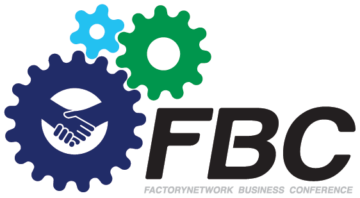Mục lục
ToggleAdvanced composite materials for industrial use are redefining how industries build, protect, and innovate. From aerospace to renewable energy, manufacturers face mounting demands for higher performance, sustainability, and cost efficiency. This article by FBC explores the latest breakthroughs and market directions shaping the future of composites. You’ll discover how new material science, manufacturing techniques, and environmental responsibility offering both solutions and opportunities in a competitive global market.
Understanding advanced composite materials
Modern advanced composites encompass diverse material systems, each optimized for specific performance requirements and application environments that define their suitability for particular industrial uses and manufacturing processes.
- Fiber-reinforced composites: Carbon fiber reinforced polymers (CFRP) represent the most advanced fiber composite systems, delivering tensile strengths exceeding 3,500 MPa with densities 75% lower than steel. These materials enable weight reductions of 40-60% in aerospace applications while maintaining superior mechanical properties and fatigue resistance.
- Laminated and sandwich composites: Laminated composite structures utilize multiple layers of fiber-reinforced materials with controlled fiber orientations to optimize mechanical properties for specific loading conditions and performance requirements.
- Matrix-based composites: Thermoset matrices including epoxy, polyester, and vinyl ester systems provide excellent mechanical properties and chemical resistance for high-performance applications. Modern epoxy systems achieve glass transition temperatures exceeding 200°C while maintaining toughness and processability.
- Smart and hybrid composite variants: Intelligent composite systems integrate sensing capabilities, shape memory functions, and adaptive properties that enable real-time monitoring and performance optimization during service life.
The shift from conventional to advanced composites showcases ongoing innovation in fibers, matrices, and manufacturing, broadening applications and reducing costs. Early glass fiber–polyester systems offered strength and corrosion resistance, paving the way for wider adoption. Later, carbon fiber and advanced epoxies delivered aerospace-grade performance. Emerging generations add nanotech, bio-based materials, smart functions, and future recyclability for truly intelligent composites.

Benefits of using advanced composites in industry
Advanced composite materials deliver strategic advantages across industrial applications through unique property combinations that enable superior product performance, operational efficiency, and lifecycle value that traditional materials cannot achieve.
High strength-to-weight ratio
Advanced composites offer exceptional strength-to-weight ratios, allowing 40–70% weight reduction versus steel and 15–25% versus aluminum without sacrificing strength. Their specific strength can exceed 2,000 kN·m/kg, far surpassing steel’s 160 kN·m/kg, enabling designs impossible with traditional materials. Stiffness-to-weight ratios are 3–5 times higher than steel, ideal for aerospace and precision equipment. These weight savings boost fuel efficiency, reduce structural demands, and trigger cascading benefits like smaller motors, lower energy use, and simpler supports.
Corrosion and chemical resistance
In demanding environments, advanced composites stand out for their ability to resist chemical attack, moisture intrusion, and environmental wear, ensuring long-term reliability. These materials handle acids, bases, solvents, and most industrial chemicals—over 90%—even under elevated heat, thanks to advanced matrices like vinyl ester and epoxy novolac. At sea, they avoid the galvanic corrosion, saltwater damage, and biofouling that plague metals, delivering decades of consistent performance. Their heat and chemical resilience above 200 °C makes them ideal for processing equipment, while their corrosion-proof nature can trim lifecycle costs by up to 60% and eliminate costly maintenance interruptions.
Extended product lifespan
Advanced composites offer exceptional durability and fatigue resistance, extending service life while lowering maintenance and lifecycle costs. Their fatigue life can surpass metals by 10–100 times, with carbon fiber variants enduring millions of load cycles without major degradation. They maintain up to 95% of properties after 25 years outdoors, resisting UV, thermal cycling, and moisture. Even after impacts or partial failures, composites degrade gradually instead of failing catastrophically. These qualities reduce corrosion-related replacements and cut total ownership costs by 30–50% over two decades.
Sustainability and energy efficiency
Modern advanced composites support sustainability by improving energy efficiency, extending product lifecycles, and incorporating bio-based materials. Weight reductions lower transportation fuel use by 3–7% for every 10% weight saved, with lifetime savings exceeding 100 times the material’s embodied energy. Advances in recyclability include thermoplastic matrices for full material recovery and chemical processes to reclaim carbon fibers. Plant-based resins cut carbon footprints by 40–60% compared to petroleum options without sacrificing performance. Meanwhile, optimized and automated manufacturing methods now match aluminum’s energy intensity.

Key industrial applications of advanced composites
Advanced composite materials have penetrated diverse industrial sectors where their unique property combinations enable superior product performance, operational efficiency, and competitive advantages that traditional materials cannot deliver.
Advanced composites are transforming performance benchmarks across industries through their unique blend of lightweight strength, durability, and design flexibility. In aviation, they cut commercial aircraft weight by up to 25% and make up over half the structure of advanced military jets, while space programs depend on them for dimensional stability in extreme environments. In the automotive sector, they are used in body panels, chassis components, and EV battery systems to achieve significant weight savings without compromising safety or structural integrity.
In renewable energy, composites enable the construction of extra-long wind turbine blades, corrosion‑resistant offshore structures, and lightweight, stable solar panel frames. Industrial applications include precision machinery, chemical processing equipment, and material handling systems where corrosion resistance and low maintenance are critical. In construction, they deliver long‑lasting solutions for bridges, architectural facades, infrastructure reinforcement, and marine installation providing decades of service with minimal upkeep.
Innovations in composite manufacturing technologies
Manufacturing technologies are transforming composite production through automation, precision control, and intelligent processes that improve quality while reducing costs and enabling new application possibilities.
Automated fiber placement (AFP)
Automated fiber placement (AFP) leverages multi‑axis robotic systems to achieve ±0.1 mm fiber placement accuracy with consistent tension and compaction. It enables complex contours and variable‑thickness structures beyond manual capabilities. Sensors and machine vision provide real‑time defect detection and automatic parameter adjustments. Deposition rates can exceed 100 kg/hour while reducing material waste by 15–25%. Precise fiber volume control and repeatable consolidation pressure ensure consistent mechanical properties.
Additive manufacturing with composites
Additive manufacturing with composites allows rapid prototyping and production of complex shapes beyond the limits of traditional methods. Continuous fiber 3D printing embeds carbon or glass fibers to achieve strength close to conventional laminates while enabling intricate internal designs. Multi‑material printing creates parts with tailored property distributions for specific performance needs. Design cycles shrink from weeks to days, with integrated features reducing assembly and part count. It is ideal for low‑volume, high‑value components where tooling costs are impractical, preserving composite performance benefits.
Smart monitoring and process control (AI/ML integration)
Smart monitoring and process control with AI/ML brings real‑time optimization, predictive quality control, and defect prevention to composite manufacturing. Sensors track key parameters like temperature, pressure, and cure state, while algorithms forecast final part properties. Quality models flag potential defects early and suggest adjustments to maintain specifications. Optimization systems fine‑tune parameters continuously to improve quality, cut cycle times, and reduce waste. Predictive maintenance analyzes equipment data to prevent failures and avoid production disruptions.
Sustainable and bio-based composite development
Sustainable and bio‑based composite development focuses on reducing environmental impact without sacrificing industrial performance. Plant‑derived resins such as soy, castor oil, and lignin cut carbon footprints by 40–60% while meeting structural demands. Natural fibers like flax, hemp, and bamboo offer renewable reinforcement alternatives to synthetics. Recycling methods include chemical recovery of carbon fibers and mechanical recycling of thermoplastic composites. Lifecycle optimization evaluates raw materials, manufacturing energy, service life, and end‑of‑life recycling options.

Industry standards and quality guidelines
Comprehensive standards and quality frameworks ensure consistent performance and safety of advanced composite materials while facilitating global trade and application certification across diverse industrial sectors.
ISO and ASTM standards for composite fabrication
ISO and ASTM standards provide a unified framework for composite material specification, testing, and quality assurance, ensuring consistent performance worldwide. ISO 14125 defines methods for evaluating tensile, compressive, and flexural properties of fiber‑reinforced plastics, while ASTM D3039 specifies tensile testing procedures for polymer matrix composites with statistical analysis to ensure reliable engineering data. Quality management systems such as ISO 9001 and the aerospace‑specific AS9100 establish processes for consistent, safety‑critical production.
Testing and inspection protocols
Testing and inspection protocols ensure composite materials meet performance requirements and deliver long‑term reliability in critical applications. Non‑destructive methods such as ultrasonic inspection, thermography, and X‑ray radiography identify internal defects without damaging the part. Mechanical testing establishes design allowables by evaluating properties under static, fatigue, and environmental conditions. During manufacturing, quality control uses in‑process monitoring of temperature, pressure, and cure state alongside statistical process control to maintain consistency.
Regulatory compliance in global markets
Global regulatory compliance sets safety, performance, and environmental standards for composite materials, enabling certification and market access. Aviation authorities such as the FAA and EASA mandate rigorous testing to meet strict safety criteria, while automotive regulations like FMVSS and ECE define crashworthiness and durability requirements. In construction, building codes establish structural performance standards and safe design guidelines. Environmental directives such as REACH and RoHS restrict hazardous substances and require comprehensive lifecycle documentation to ensure sustainable and compliant material use.
Leading structural composite companies and manufacturers
The global composite industry is led by major innovators and supported by emerging regional suppliers. Companies like Hexcel, Toray, SGL Carbon, and Owens Corning push advancements in carbon and glass fiber technologies, offering integrated solutions for aerospace, automotive, industrial, and construction markets. In Southeast Asia, Vietnam focuses on labor‑intensive fabrication, Thailand supplies automotive components for global OEMs, and Malaysia provides precision manufacturing for aerospace and electronics. Regional supply chain integration helps balance cost efficiency with high quality.
Choosing a reliable composite partner involves assessing technical expertise, manufacturing capabilities, engineering support, and growth potential. Quality certifications such as ISO 9001 or AS9100 ensure consistent output and regulatory compliance. Financial stability guarantees dependable supply and long‑term support, while strategic alignment in location, technology plans, and continuous improvement fosters lasting, mutually beneficial partnerships.
Featured spotlight: FBC ASEAN & NC Network ecosystem
FBC ASEAN and the NC Network ecosystem provide comprehensive platforms for connecting composite manufacturers with global buyers while facilitating technology transfer and business development across ASEAN manufacturing networks.
How FBC ASEAN connects composite manufacturers and buyers
FBC ASEAN is a leading networking platform for the composite industry, connecting manufacturers, suppliers, and buyers through trade exhibitions and business matching services. Its annual exhibition hosts over 300 companies and 10,000+ visitors seeking advanced material solutions for aerospace, automotive, renewable energy, and industrial applications in Southeast Asia. Business matching uses advanced algorithms to pair manufacturers with qualified buyers based on technical needs, capabilities, and commercial goals, offering pre‑qualified meetings that boost networking efficiency.
Use cases of Vietnamese & Japanese companies in advanced composites
Strategic partnerships between Vietnamese manufacturers and Japanese technology leaders showcase how complementary strengths can drive composite industry growth for global markets. Vietnamese companies such as TH True Milk and Saigon Precision have expanded into composite packaging and industrial equipment, working with Japanese partners for technology transfer and quality system development. Japanese firms like Teijin, Toray, and Mitsubishi Chemical supply advanced materials and technical expertise while leveraging Vietnam’s cost‑effective manufacturing for regional market access.
Leveraging EMIDAS for supplier discovery and technical matching
The EMIDAS platform offers a powerful supplier discovery and technical matching system that links buyers with qualified composite manufacturers through detailed capability assessments and direct communication tools. Its advanced search functions allow filtering by material type, manufacturing process, certifications, capacity, location, and commercial criteria to pinpoint the most suitable partners.
Opportunities to showcase and collaborate at FBC events
FBC ASEAN events offer composite companies a prime stage to present their capabilities, engage buyers, and build strategic partnerships within Southeast Asia’s leading manufacturing exhibitions. Dedicated composite material pavilions allow exhibitors to showcase products, highlight technical expertise, and hold targeted business meetings with qualified partners from across the region.
Future outlook: What’s next for advanced composite materials?
The future of advanced composite materials promises revolutionary developments that will expand application possibilities while addressing sustainability challenges and enabling new functionalities that transform industrial manufacturing approaches.
Integration with industry 4.0
Industry 4.0 is transforming composite manufacturing with smart sensors, AI, and connected systems that enable real‑time optimization and predictive control. Digital twin technology provides virtual replicas for monitoring, maintenance, and lifecycle management, while IoT connectivity supports continuous tracking, performance optimization, and remaining life assessment of composite structures.
Circular economy and recyclable composites
Recyclable composites support a circular economy by reducing environmental impact while retaining performance. Chemical and thermoplastic systems enable fiber recovery or full recyclability, while bio‑based materials cut carbon footprint by 40–60% and offer biodegradable options. Lifecycle assessments drive improvements from production to end‑of‑life management.
Potential in smart infrastructure and green manufacturing
Advanced composites are driving smart infrastructure by combining sensing, adaptive functions, and sustainable design. Embedded sensors enable real‑time condition monitoring and predictive maintenance for bridges, buildings, and transport systems. Adaptive structures use shape memory alloys and smart polymers to respond automatically to environmental changes, while energy‑harvesting composites generate power through photovoltaic or piezoelectric elements. Lightweight designs and bio‑based materials further cut energy use and environmental impact, aligning with sustainability goals and regulations.

The evolution of advanced composite materials for industrial use is no longer a distant vision it’s a present‑day reality transforming manufacturing worldwide. By staying ahead of these emerging trends, businesses can secure competitive advantages in performance, cost reduction, and sustainability. Whether you’re an engineer, procurement manager, or industry leader, now is the time to align your strategies with these innovations.
Follow FBC to stay informed on the latest insights, case studies, and product developments or to connect directly with solutions that match your specific industrial needs.




